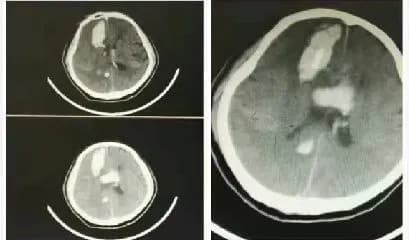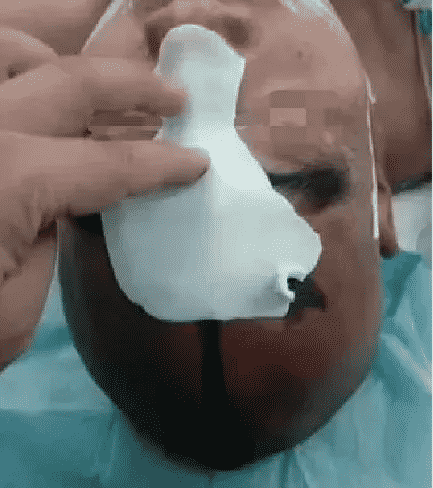A surgical guide is a powerful tool for accurate surgical operations. Nowadays, more and more hospitals have begun to quickly customize personalized surgical guides for patients based on the 3D reconstruction and surgical simulation technology, with digital design and 3D printing equipment. This helps doctors perform precision surgery and shortens the operation time.
Recently, Weihai Central Hospital performed two intracranial surgeries, both using 3D printed surgical guides.
Case 1: Intracranial drainage surgery
A patient in Weihai suffered from intracranial hemorrhage at around 8 pm. The situation was very critical and the intracranial drainage surgery must be operated immediately. Intracranial hemorrhage is an acute and critical illness in neurosurgery. Accurate and safe puncture is the key to ensuring efficacy and preventing complications.
In view of the difficulty of positioning the puncture needle in this operation, after the bleeding point is found with the assistance of CT and MRI images, the doctor in charge of Wei Wei Central Hospital decided to use 3D printed surgical guides.

When designing a surgical guide, the contact surface between the guide and the patient’s face is enlarged so that the guide can be more firmly and accurately fixed on the patient’s head during the operation.

At the same time, in order to ensure the strength and reliability of the surgical guide, the engineer inserts a metal ring into the puncture hole of the guide, and then performs high-temperature and high-pressure disinfection.
At 10:26 that night, the 3D printed guide for drainage surgery was delivered to the doctor. Three hours later, the intracranial minimally invasive drainage surgery was successfully implemented, and the patient gradually recovered.
The role of the “private custom” intracranial drainage surgical guide was highly estimated by the doctors.

Case 2: Removal of left parietal sinus meningioma
A patient at Weihai Central Hospital was diagnosed with a meningioma with a diameter of 1 cm. The situation was urgent. After the consultation, the physicians decided to remove the tumor.
The chief physician Zou of the hospital consulted a technical engineer and ordered a tumor surgical guide. The guide can help to find the precise location of the tumor in the patient’s skull.
With the help of spiral CT thin-layer scan data, the location of the meningiomas was accurately located.
By constructing a 3D model of the head and face, the position of the incision was determined, and a surgical guide that matched the characteristics of the patient was designed and printed in a short time.
The 3D printed surgical guide played a vital role during the surgery. Doctors used it to accurately locate the size of the incision and accurately complete the operation.

As of the end of 2019, nearly 100 cases happened in spinal surgery, neurosurgery, oncology, oral surgery, rehabilitation medicine and other departments in Weihai Central Hospital have adopted 3D printing and 3D scanning technology during the diagnosis and treatment process.